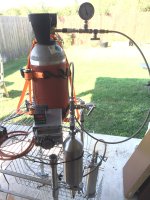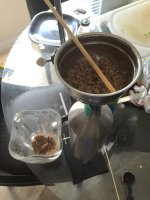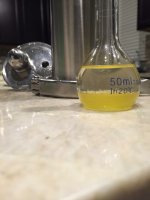ouro said:
cool idea -
to extract freebases you would need to wet the material with base first, then dry, no?
Also, how do you know alkaloids are the main substance soluble in super critical co2? It seems like a good solvent for many things in plant material.
viewing window? I'd be more inclined to automate it as much as possible and bury the device in cinderblocks/bricks/sandbags while its under pressure.
I'd expect raw plant matter to contain alkaloids in their salt form so basifying would have to be done at some stage. Basifying before the extraction would most likely be the best route as it should eliminate the need for hydrocarbon solvents. That being said there are options for basifying after the extract.
I can't say for sure what the CO2 will extract, there isn't a great deal of freely available information on the topic in regards to what is soluble in SC CO2. My preliminary investigations seem to indicate that non polar molecules are soluble in th SC CO2 so I'm hoping it will be a similar profile to a xylene extract.
It could be more selective I just don't know. Maybe some of our chemists could help here ?
A sight glass rated for boilers/steam should take the pressure, but I tend to agree with you and would most likely omit that from my prototype. I don't know what would be so important that it would need to visually monitored anyway. I'd prefer to monitor the process with thermocouples and pressure gauges.
I was thinking of the safety of the operational procedure for the device too, I certainly wouldn't want to be near something like that in the event of rupture/failure.
Any pressurised gas has the potential to kill. I know a small leak in a dry/superheated steam system can easily cut a man in half. So to run such a device it will certainly need to be safely contained in something resembling a blastproof cabinet or buried. The device will also have to be designed to be fail safe (if it fails it will fail safely) and have an excessive safety factor carefully calculated in the design phase.
This type of device is beyond the scope of your neighborhood plumber or backyard mechanic and I wouldn't consider building this without consultation from an engineer with hands on experience in high pressure applications.
Don't try this at home kids.




